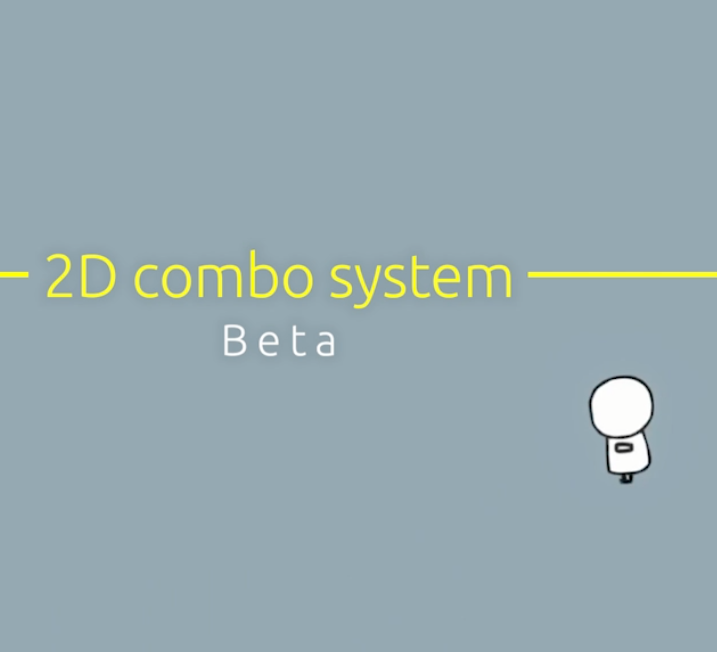2D Combo System Prototype Mac OS
2D Combo System Prototype Mac OS
Macintosh® OS 10.11 through 11.01 or higher¹, x64 Intel® Mac®, 3 GB of hard disk space, 8 GB RAM or greater, Mouse Pointing Device (wheel button recommended), OpenGL Compliant video card with 256 MB VRAM, ¹ Program compatibility is not guaranteed for earlier operating systems, require a machine with an operating system using x64 (64-Bit. You can create a basic prototype easily and quickly using Unity. Here is a list of some of the win-win features of Unity that explain why nearly half of all the games in the world are created using it. Unity’s all-in-one editor supports 2D as well as 3D development. It is compatible with Mac, Windows, and Linux. A combo update containing all of the changes since the original release of that major version, and therefore can be used on anything from the same major version. For example, the 10.8.2 combo update can update from either 10.8.0 or 10.8.1; it can even be reinstalled on a system that's already running 10.8.2. An example would be if a Combo Update, Security Update, CoreOS Application or Gatekeeper was updated to a new version. Apple System Status (Online Services) This page is for the Core macOS System. Mercury Performance System in Illustrator—Work with precision, speed, and rock-solid stability on large, complex files due to native 64-bit support on Mac OS.
In 1984 Apple Computer unveiled their Macintosh. It included a new user interface that revolutionized the way people though about computer interaction. Originally referred to as simply 'Macintosh System', the underlying OS was a single-tasking disk system for the Motorola 68K CPU. Significant changes were made in MacOS 7.x.
Emulation note: For MacOS 0.x-6.x we recommend the vMac Mini emulator.
It is possible to write Macintosh 400k/800k images to a real disk using a Kryoflux.
Note: Wikipedia's/Apple's Developer CD Classic Mac OS 'System Software' numbering scheme is GARBAGE and should NOT be used.
Screenshots
2d Combo System Prototype Mac Os 11
Release notes
Twiggy Mac OS is a development pre-release used with the 5.25' Twiggy prototype Macintosh.
This version will not run on a normal Macintosh or emulator, and used Apple's 5.25' Twiggy floppy disk. A special Twiggy Macintosh emulator is included so you may try it for yourself.
There are also two 'Sony Test' pre-releases, that run from a 3.5' disk. One includes a late version of the original Finder prototype renamed as 'Flounder'.
A detailed review can be found here: Toastytech Apple Macintosh Twiggy Pre-Release
Start up from macOS Recovery
Determine whether you're using a Mac with Apple silicon, then follow the appropriate steps:
Apple silicon
2d Combo System Prototype Mac Os Download
Turn on your Mac and continue to press and hold the power button until you see the startup options window. Click the gear icon labeled Options, then click Continue.
Intel processor
Make sure that your Mac has a connection to the internet. Then turn on your Mac and immediately press and hold Command (⌘)-R until you see an Apple logo or other image.
If you're asked to select a user you know the password for, select the user, click Next, then enter their administrator password.

Reinstall macOS
Select Reinstall macOS from the utilities window in macOS Recovery, then click Continue and follow the onscreen instructions.
Follow these guidelines during installation:
- If the installer asks to unlock your disk, enter the password you use to log in to your Mac.
- If the installer doesn't see your disk, or it says that it can't install on your computer or volume, you might need to erase your disk first.
- If the installer offers you the choice between installing on Macintosh HD or Macintosh HD - Data, choose Macintosh HD.
- Allow installation to complete without putting your Mac to sleep or closing its lid. Your Mac might restart and show a progress bar several times, and the screen might be empty for minutes at a time.
After installation is complete, your Mac might restart to a setup assistant. If you're selling, trading in, or giving away your Mac, press Command-Q to quit the assistant without completing setup. Then click Shut Down. When the new owner starts up the Mac, they can use their own information to complete setup.
Other macOS installation options
When you install macOS from Recovery, you get the current version of the most recently installed macOS, with some exceptions:
- On an Intel-based Mac: If you use Shift-Option-Command-R during startup, you're offered the macOS that came with your Mac, or the closest version still available. If you use Option-Command-R during startup, in most cases you're offered the latest macOS that is compatible with your Mac. Otherwise you're offered the macOS that came with your Mac, or the closest version still available.
- If the Mac logic board was just replaced, you may be offered only the latest macOS that is compatible with your Mac. If you just erased your entire startup disk, you may be offered only the macOS that came with your Mac, or the closest version still available.
You can also use these methods to install macOS, if the macOS is compatible with your Mac:
2d Combo System Prototype Mac Os X
- Use the App Store to download and install the latest macOS.
- Use the App Store or a web browser to download and install an earlier macOS.
- Use a USB flash drive or other secondary volume to create a bootable installer.
2D Combo System Prototype Mac OS
